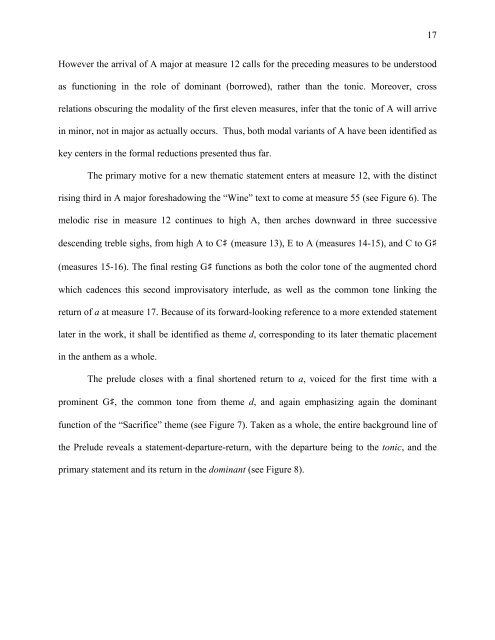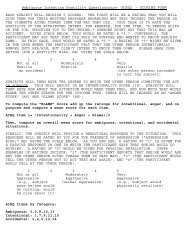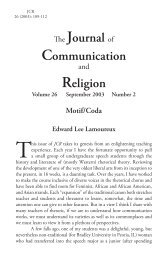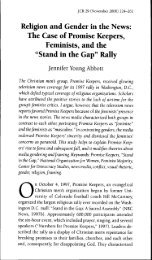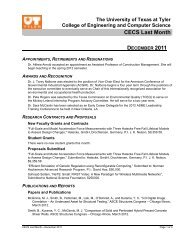"History, Analysis and Performance Considerations of Gerald Finzi's ...
"History, Analysis and Performance Considerations of Gerald Finzi's ...
"History, Analysis and Performance Considerations of Gerald Finzi's ...
You also want an ePaper? Increase the reach of your titles
YUMPU automatically turns print PDFs into web optimized ePapers that Google loves.
17However the arrival <strong>of</strong> A major at measure 12 calls for the preceding measures to be understoodas functioning in the role <strong>of</strong> dominant (borrowed), rather than the tonic. Moreover, crossrelations obscuring the modality <strong>of</strong> the first eleven measures, infer that the tonic <strong>of</strong> A will arrivein minor, not in major as actually occurs. Thus, both modal variants <strong>of</strong> A have been identified askey centers in the formal reductions presented thus far.The primary motive for a new thematic statement enters at measure 12, with the distinctrising third in A major foreshadowing the “Wine” text to come at measure 55 (see Figure 6). Themelodic rise in measure 12 continues to high A, then arches downward in three successivedescending treble sighs, from high A to C♯ (measure 13), E to A (measures 14-15), <strong>and</strong> C to G♯(measures 15-16). The final resting G♯ functions as both the color tone <strong>of</strong> the augmented chordwhich cadences this second improvisatory interlude, as well as the common tone linking thereturn <strong>of</strong> a at measure 17. Because <strong>of</strong> its forward-looking reference to a more extended statementlater in the work, it shall be identified as theme d, corresponding to its later thematic placementin the anthem as a whole.The prelude closes with a final shortened return to a, voiced for the first time with aprominent G♯, the common tone from theme d, <strong>and</strong> again emphasizing again the dominantfunction <strong>of</strong> the “Sacrifice” theme (see Figure 7). Taken as a whole, the entire background line <strong>of</strong>the Prelude reveals a statement-departure-return, with the departure being to the tonic, <strong>and</strong> theprimary statement <strong>and</strong> its return in the dominant (see Figure 8).


